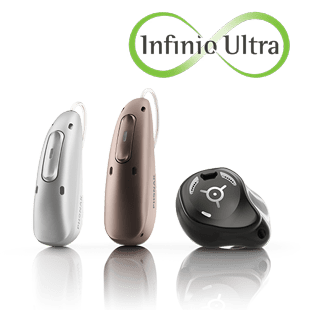
Practicing patient conversations with Virtual Personas
This simulated-based learning tool from NAL uses AI-powered Virtual Personas to give audiologists a realistic way to practice patient conversations, building confidence, empathy, and communication skills.
Clinical training in audiology often focuses on diagnostics and the technical aspects of hearing aid fitting. These skills are essential. However, successful outcomes in hearing care also rely on the ability to understand patient motivations, address concerns, and build trust.
It is well accepted that patient-centered care and a positive clinician–patient relationship support better satisfaction and engagement with hearing care. Yet structured opportunities to develop these “soft skills” are limited.
Most training offers little scope to practice counselling, motivational interviewing, or managing resistant patient responses in a controlled setting. This gap can contribute to delayed treatment and unmet patient needs.
Within the Smart Tech team at National Acoustic Laboratories (NAL), we set out to address this challenge. The result is NAL Virtual Personas (NAL-VP), a structured, AI-powered way to practice patient communication.
What are Virtual Personas?
Virtual Personas are authentic AI-powered patient profiles designed for audiology training. Each persona combines a unique hearing condition, background, lifestyle, and set of attitudes. To enrich the experience, users can adjust traits such as communication style or openness to treatment, ensuring exposure to a wide variety of patient types.
With NAL-VP, clinicians engage in realistic conversations that mirror the challenges of everyday practice. They can take case histories, explain test results in clear and patient-friendly terms, and counsel patients on treatment options. The system also allows practice in handling hesitation, anxiety, or resistance, and experimentation with different approaches.
Because these interactions are simulated, training takes place in a safe environment where strategies can be tested, reflected on, and refined without the consequences of a live consultation.

Features of NAL-VP
NAL-VP has been designed to make training practical, scalable, and clinically relevant. Key features include:
- AI-Driven Adaptive Conversations, tailored for audiology contexts
- Diverse Persona Library, covering varied demographics and hearing conditions
- Customizable Personality Traits
- Voice-Based Natural Interaction for spoken dialogue
- Multilingual Support for consistent training across languages
- Self-directed or Trainer-led sessions
- Conversation Transcripts and Summaries for reflection and feedback
Powered by AI, NAL-VP is built on a foundation of clinical expertise. The personas draw on case studies, educator input, and patient data, ensuring they remain relevant to real-world practice.
The system leverages a large language model, supported by advanced prompt engineering, control logic, and summarization. These safeguards, along with extensive testing and refinement, keep conversations realistic, appropriate, and on-task.
The result is a domain-specific training environment that combines the performance of AI with the rigor of clinical oversight.
Applications and benefits
NAL-VP can be integrated into many training contexts. In bootcamps or onboarding programs, it helps emerging clinicians build confidence and new skills. During product launches, it allows staff to practice how to introduce new hearing aid features and adapt their explanations to patients with varying levels of knowledge or interest.
For experienced professionals, it can be used as refreshers to strengthen approaches such as family-centered care, motivational interviewing, or shared decision-making.
We know patients present with many different attitudes. Some are skeptical about hearing technology, others are anxious or uncertain, and some are motivated but misinformed. NAL-VP allows clinicians to rehearse these scenarios in advance, developing the agility to respond effectively in real consultations.
This practice strengthens rapport, supports family-centered care, and contributes to better outcomes. For individual clinicians, it provides a safe space to practice, reflect, and refine their style. For clinic owners and managers, it offers a consistent and scalable way to train teams across multiple sites.
Independent clinics can adopt it as a cost-effective approach to onboarding and professional development, while universities and training programs can use it to bridge the gap between classroom learning and the realities of patient care.
Summary
Virtual training tools are not intended to replace live practice or traditional supervision. Instead, they provide a complementary method to enhance skill development. NAL-VP demonstrates how AI can be responsibly applied to strengthen communication training in audiology, ensuring clinicians are well-prepared not only in technical expertise but also in the essential skills of patient connection.
NAL-VP is already enhancing training programs in universities and is currently being developed for use in clinics. To find out more, please reach out nicky.chong-white@nal.gov.au.
You can also learn more about this topic by watching Dr. Nicky Chong-White’s presentation in the AI in Audiology webinar series, “Hearing care of the future,” now available online.
Access the webinar series here.
